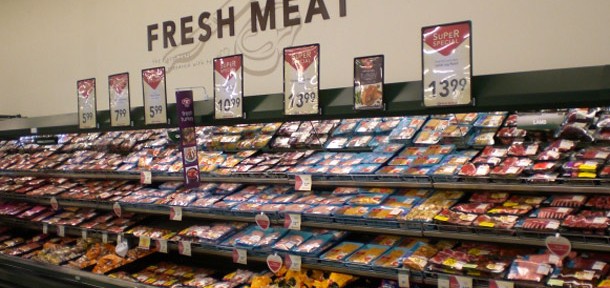-
Tis the season….for making tomato sauce

Difficulty: Easy Time: A single batch takes around an 1.5-2 hours including cooking time I break it up sometimes by doing it over two nights, cooking the tomatoes one evening and putting them in the fridge, then sieving and bottling the next. Plastic saved per year: Approximately 12 plastic 2l pet bottles per year ( for a family of 4)…
-
But I don’t have time to go zero waste!

This is a frequent lament I hear as people identify with the need to move towards zero waste but see it as as too time-consuming to be practical. We all have busy lives, we all have work, study, homes and children to look after, gardens to tame. Time is a precious commodity, it seems there is always…
-
Bulk food shops – buy a little or a lot

Inertia to start: Moderate to high Difficulty once you get going: Easy Time: No extra time. You just swap the time emptying plastic bags of rice and pasta into your tupperware once you get home for time working out which containers you need to take to the shop. Plastic saved per year: Approximately 400 plastic…
-
The miracle of Peanut Butter
Difficulty: Easy Time: 20 mins to roast nuts, 10 mins to process Plastic saved per year: about 12 1kg plastic containers What’s the catch?: For this to be completely plastic-free, you’ll need to buy the peanuts from a bulk food store – and fill your own container. Skip to recipe
-
Taking the sting out of oven cleaning
Oven cleaning is one of my most dreaded chores to the point I only manage to bring myself to do it about once a year. It’s not just that it’s dirty and difficult (it seems always to require a degree of elbow grease regardless of the claims of the oven cleaning products), but it the…
-
Christmas Indulgence

Isn’t it odd that our culture celebrates with things that are not good for us or for the planet? And here I’m thinking about sugar which comes out a birthdays, Christmas and any other celebration, and I’m also thinking about the waste, especially wrapping paper, that is associated particularly with Christmas. Our Christmas broke many…
-
Children’s Christmas Party
This weekend I took the kids to the company children’s party. It was held at a local YMCA and was a big hit with the little guests. But through my conscious consumer glasses, I could see many missed opportunities for being kind to the planet. Plastic plates, cups, and straws. A sushi platter…where the platter itself…
-
Meat without plastic

The Problem One of my biggest stumbling blocks has been how to buy meat without plastic. Sausages, chops, steak..you name it, it comes wrapped the same way in every supermarket in the country. Whole chickens only come in plastic bags. Fresh fish over the counter? At New Word they offer a one-size fits all paper/plastic/foil laminate bag which…
-
Recycling soft plastics at the supermarket!

I discovered something very exciting this weekend: my local supermarket, New World) is now offering a service that enables customer to recycle their soft plastics. What are soft plastics? Essentially any plastic bag or plastic wrap, any plastic that you can scrunch up into a ball in your hand. Examples include: Bread bags Cereal bags…
